Taito City Museum
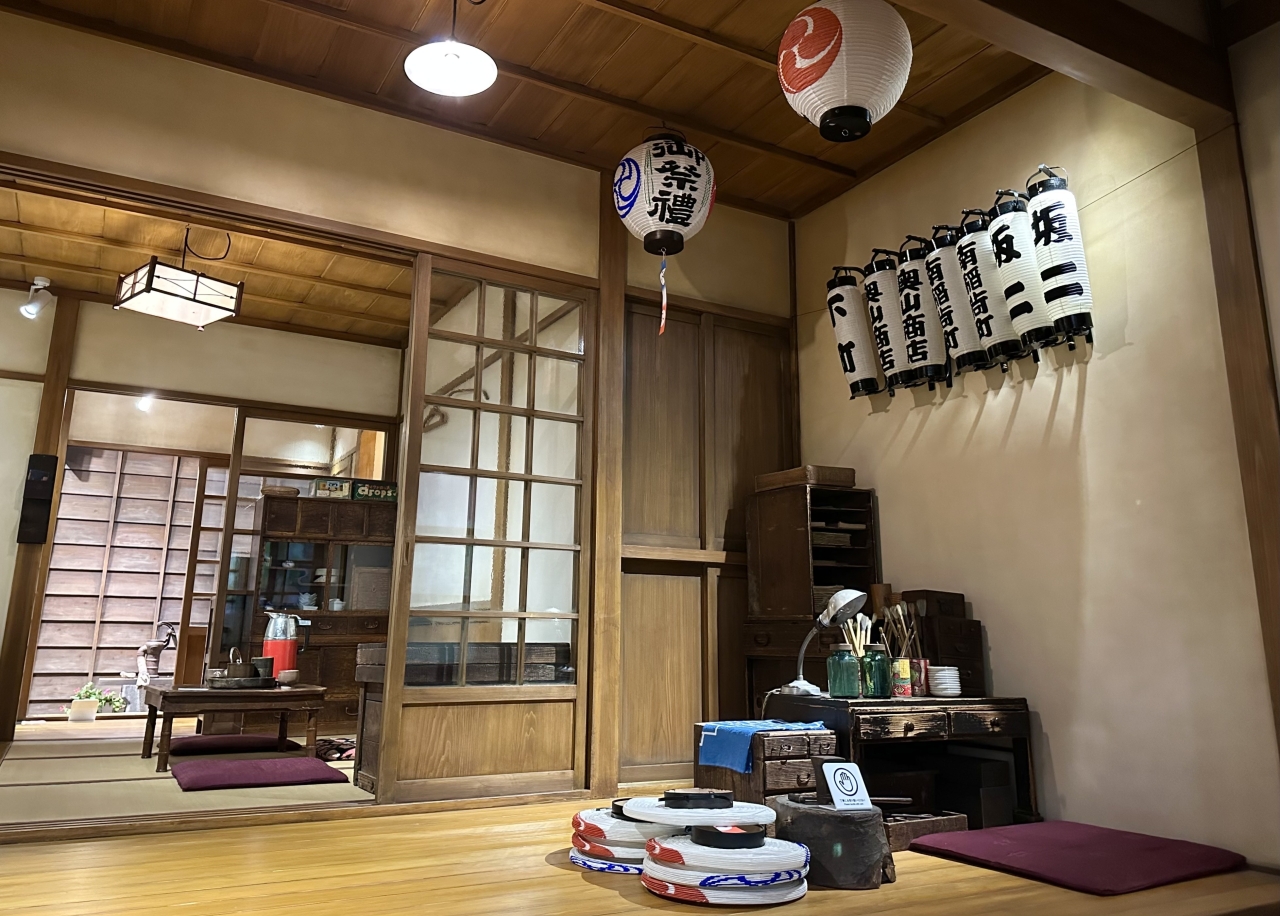
The Shitamachi Museum was opened in 1980 to convey the culture and traditions of the good old Tokyo downtown area to future generations, and has entertained many visitors, including foreign visitors to Japan. It was closed in the spring of 2023 for major renovations due to the aging of the facility, but has now reopened under the new name Shitamachi Museum .
*For information on the previous state of the Shitamachi Museum, click here⇒
https://www.culture.city.taito.lg.jp/ja/reports/29750

With this large-scale renovation, the exhibition area, which was previously only on the first and second floors, has been expanded to the third floor. New nursing rooms and barrier-free toilets have also been installed, making the facility enjoyable for even more people.
The exhibition room on the first floor recreates the streets of downtown Tokyo in the 1950s. The model is a corner of a lantern shop that operated on Kanasugi Street in Sakamoto (now Negishi 3-chome) , Taito Ward, which escaped damage from the Great Kanto Earthquake and the Tokyo Air Raids and where many old streets and buildings remained until recently. You can actually enter the life-size tenement house and experience the lifestyle and atmosphere of those times.


The recreated exhibit before the renovation was modeled after the Taisho era, but according to museum researcher Kondo Takeshi, they decided to completely revamp the content to mark the first major renovation in over 40 years since the museum opened.
“The reason we decided to set the exhibition in the 1950s, 60 to 70 years ago, was because we wanted to encourage people who were there at the time to come and see the exhibit with their families and have conversations like, ‘Oh, so this tool was used like this,'” says Kondo.
In addition, Kanasugi-dori Street had many remaining research materials such as drawings, and Mr. Igarashi, the owner of the Igarashi Lantern Shop, which is the core of the exhibition, was still alive and able to provide various forms of cooperation, which was a deciding factor for the model.
(Although the building has been rebuilt, the Igarashi Lantern Shop is still in business.)
In the 1950s and 60s, the quality of life in the downtown area was improving due to the redevelopment of districts and streets after the Great Kanto Earthquake, and the period of high economic growth during the postwar reconstruction. On the large screen installed in the exhibition area, a retro-style animation video is being shown that depicts Kanasugi-dori Street during that period.
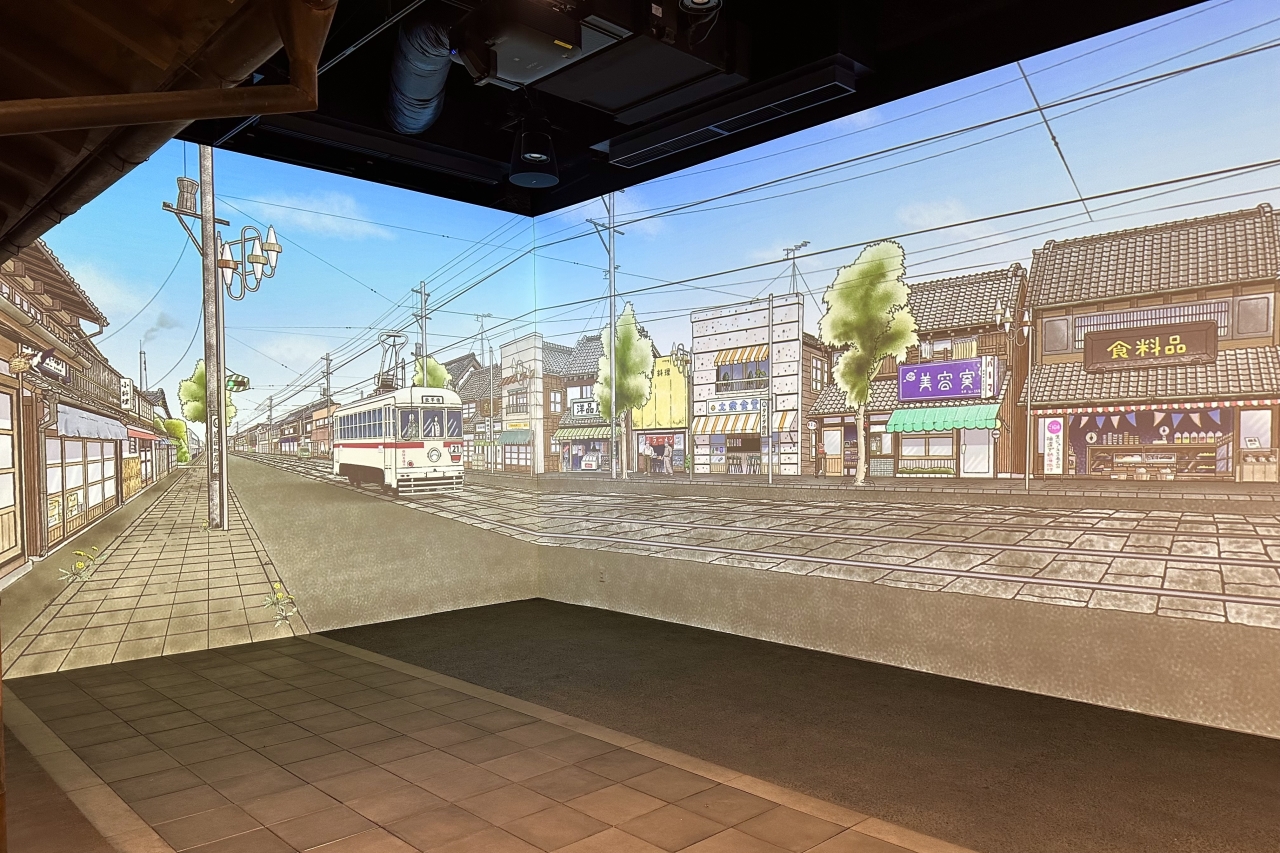
In the video, a main street is lined with “Omote-nagaya” (front row houses) housing shops, restaurants, beauty salons and more, and while trams and cars run along the road, there are also vegetable carts and ramen stalls. The video conveys that old-fashioned lifestyles continue to thrive amid the waves of a new era, and deliberately no background music is used, instead emphasizing environmental sounds such as the sound of trams running and birds chirping to create a sense of realism.
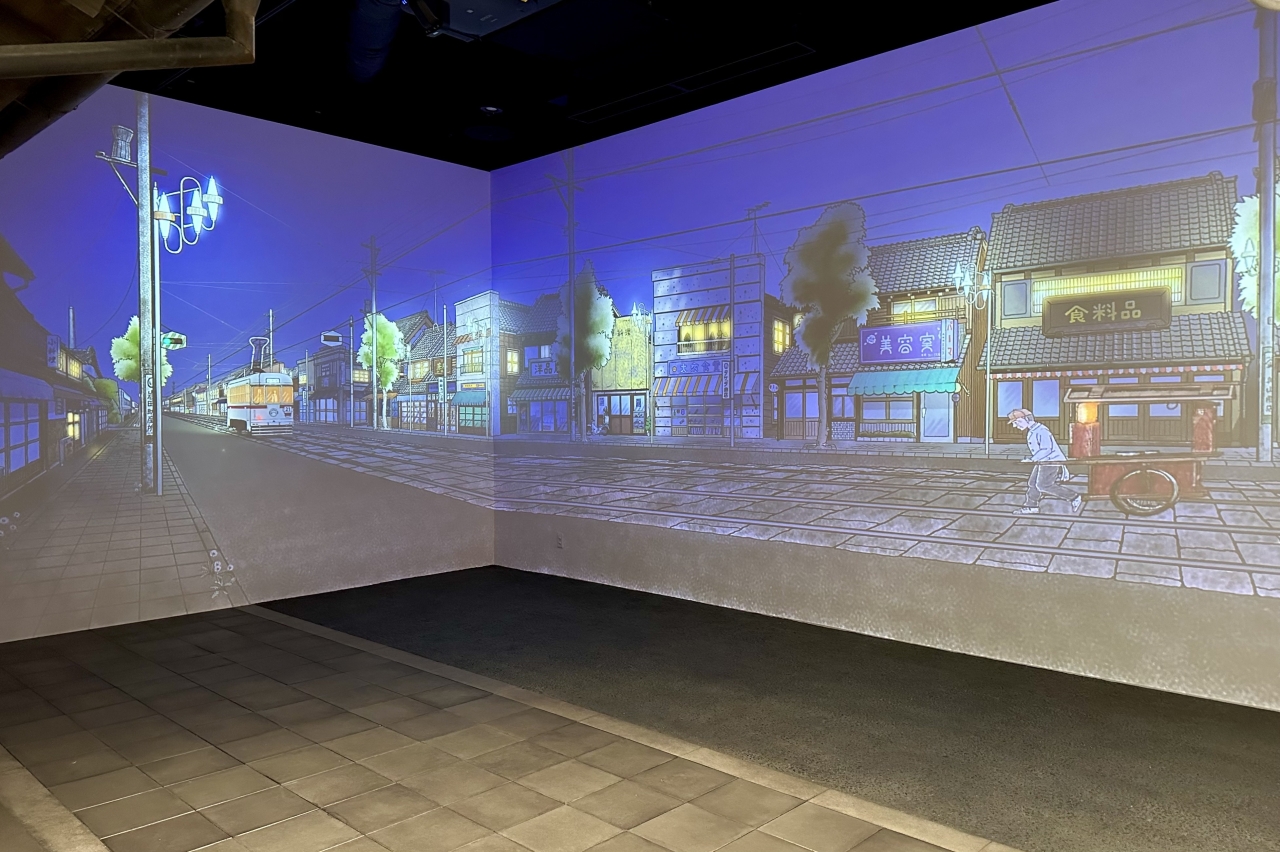
They will alternate between the “Spring/Summer version” and the “Autumn/Winter version” depending on the season.
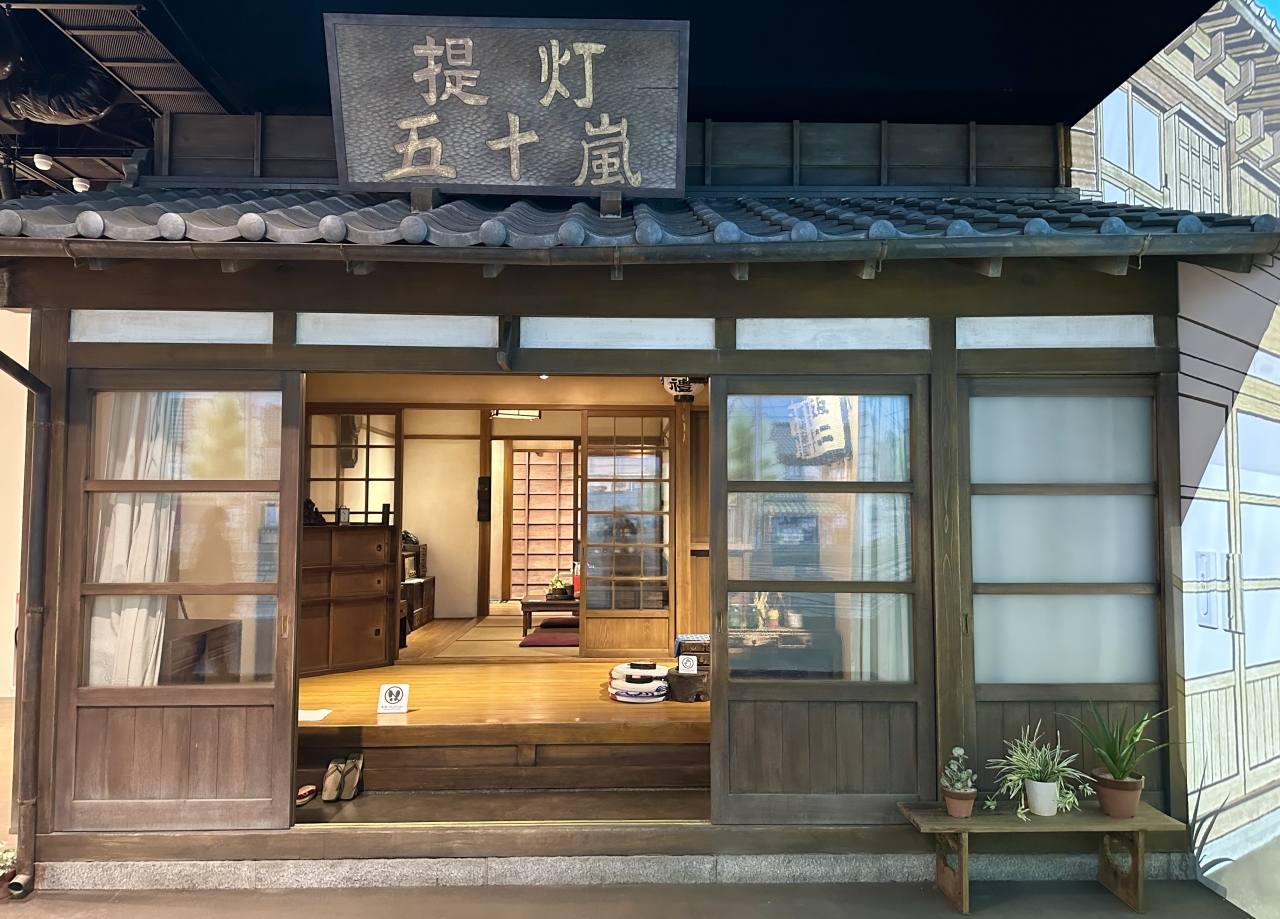
Even as infrastructure such as electricity and gas was developed, lanterns remained an essential item in downtown areas, where many festivals were held. The Igarashi Lantern Shop, which has been in business since the end of the Edo period, has a display that recreates the workshop where lanterns were assembled and inscribed. On display are round festival lanterns, anvils and hammers for fixing the top and bottom of the lanterns, and paintbrushes for inscribing and coloring.
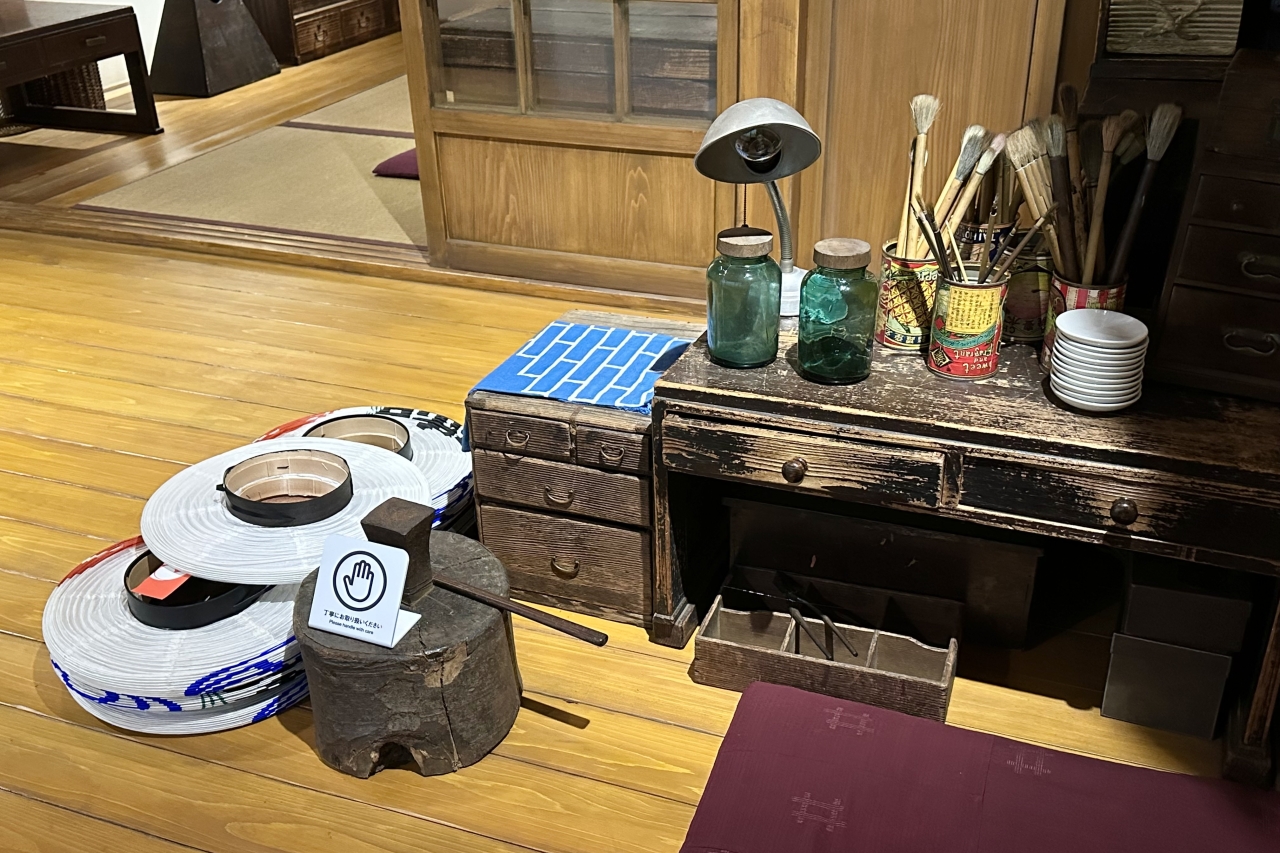
These items, such as household items and furniture, were basically donated by the ward’s residents, so they show signs of wear and tear. You can touch them, and get a feel for their texture and weight, which is one of the museum’s attractions. (Please handle them with care when touching them.)
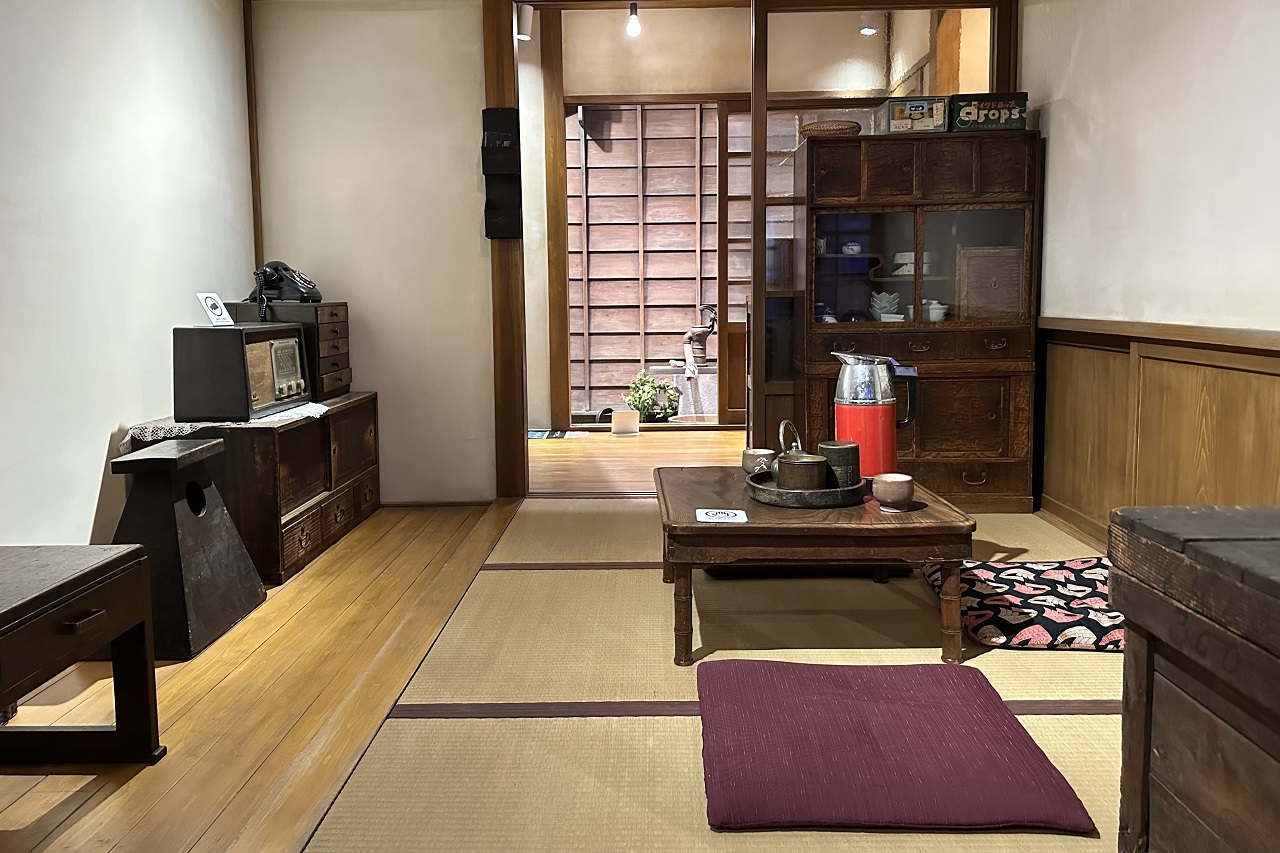
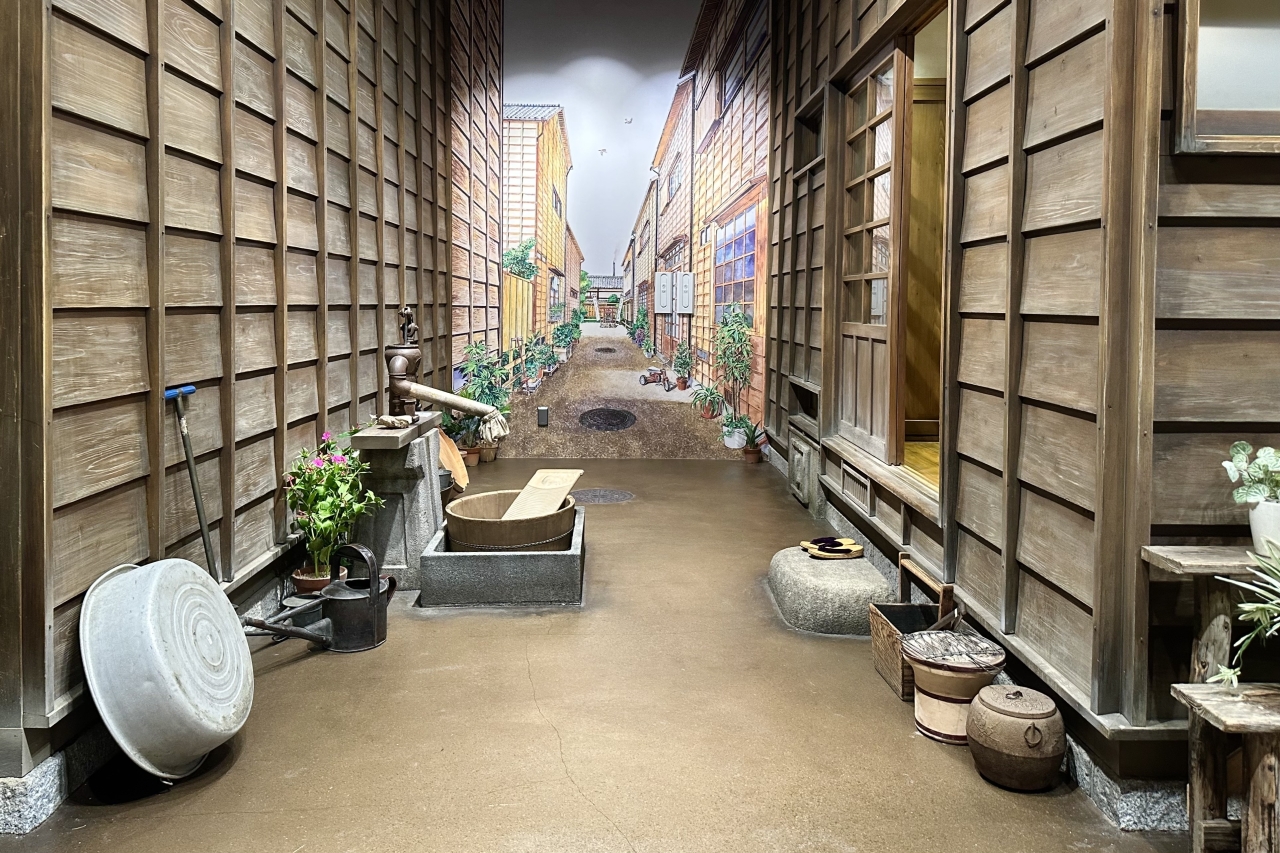
It was also a playground for children and a place for residents to socialize.
Behind the workshop is the living space and kitchen, and if you exit the kitchen through a back door into the alley, you will find a “back alley” across the street. In addition to the craftsmen and office workers who commuted from home to their workplace, the back alley was home to peddlers such as street kamishibai storytellers, and the exhibition recreates the residence of a kamishibai storyteller.
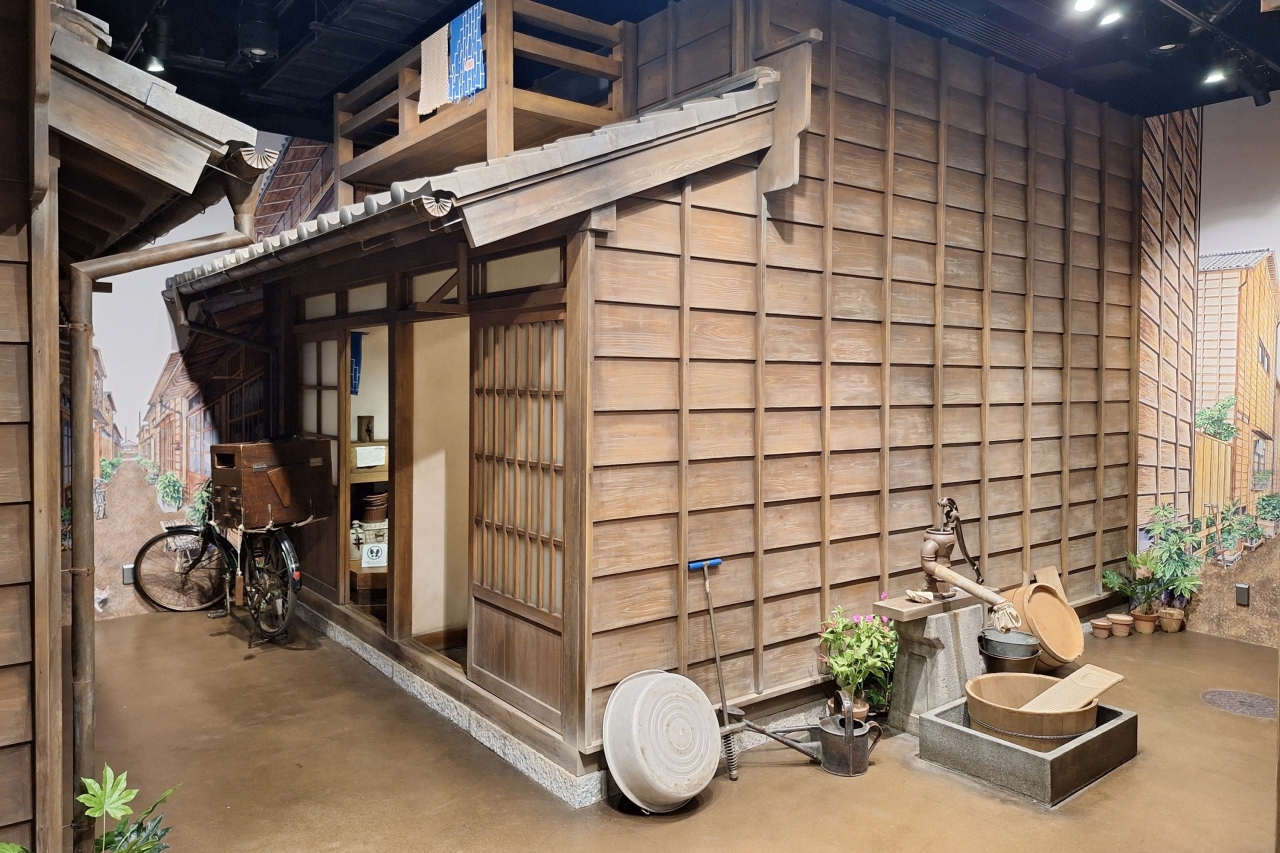
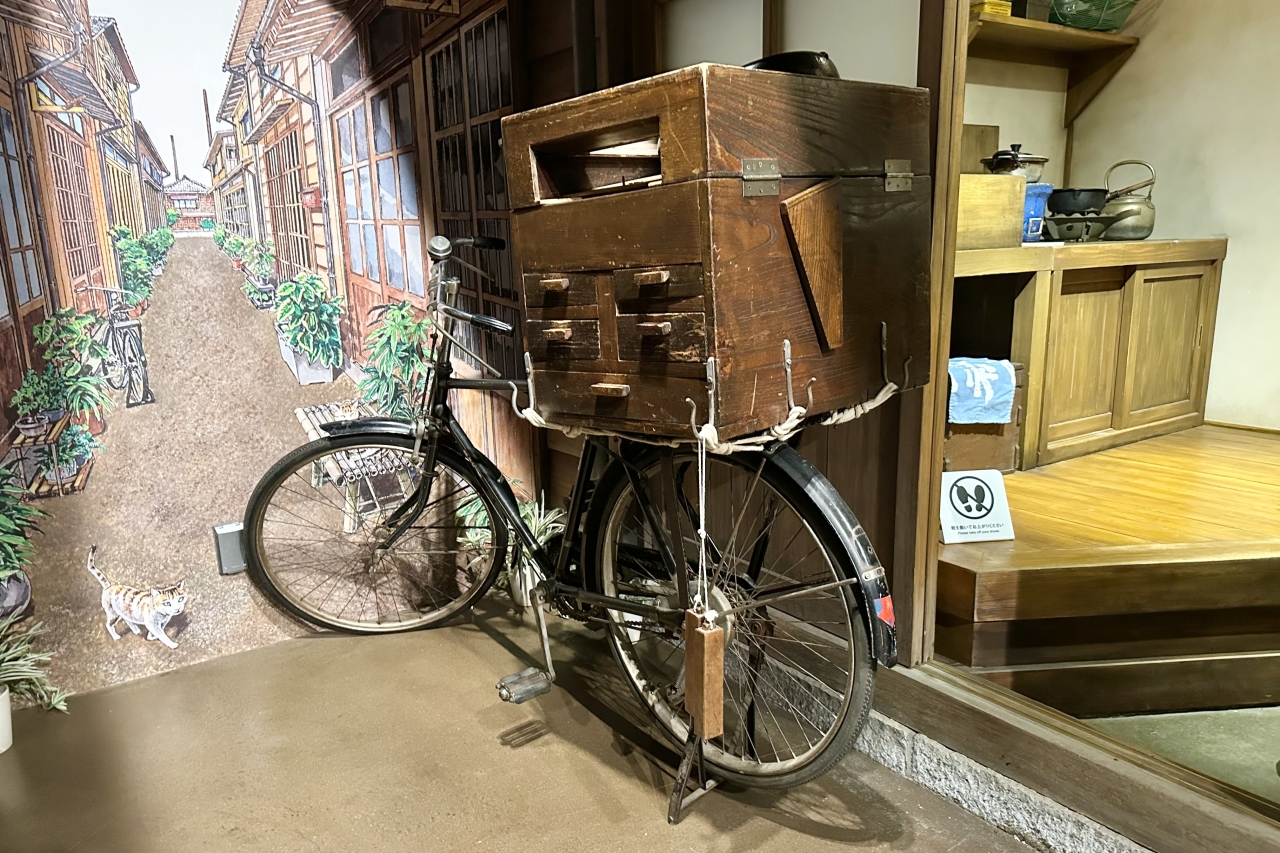
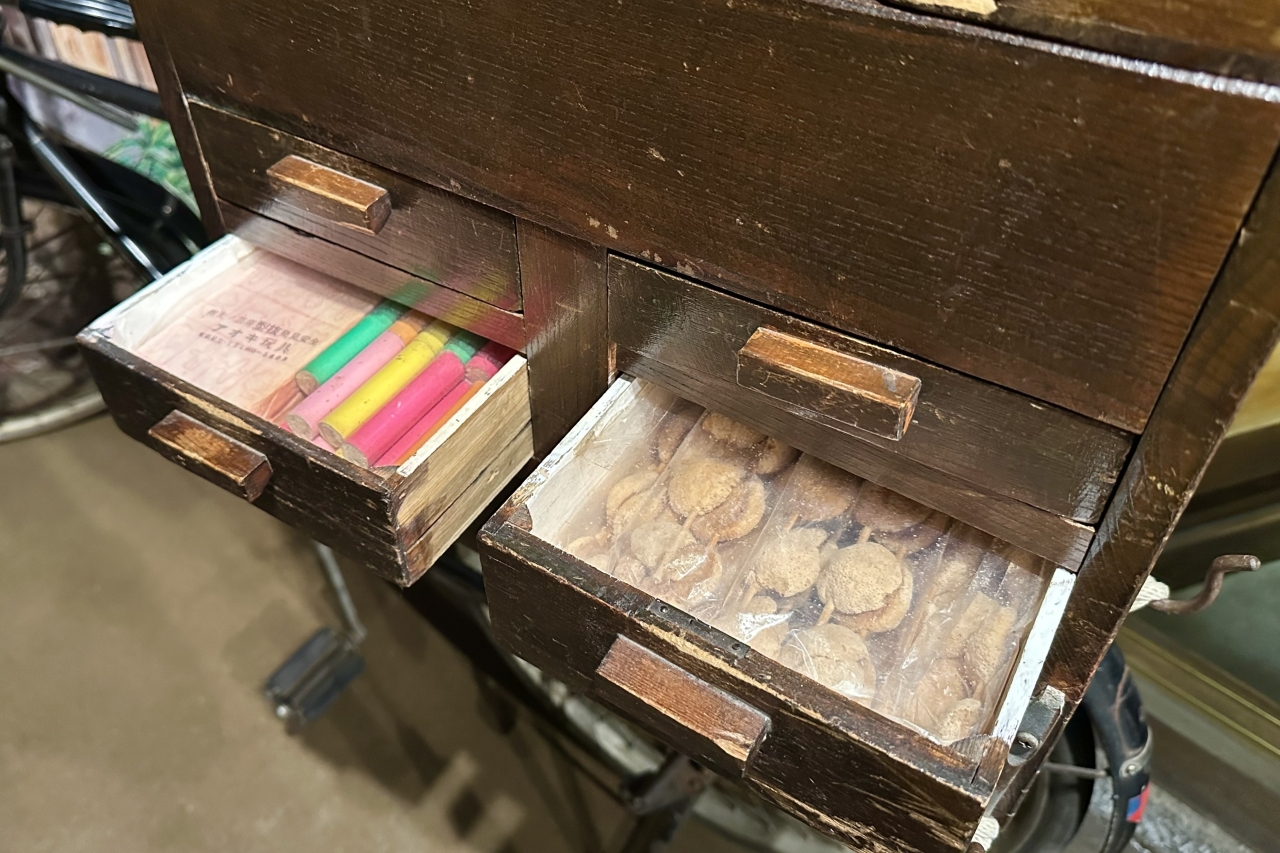
Glass jars and wooden boxes for storing cheap sweets are placed on the step up to the entrance. Kamishibai performers made a living by selling cheap sweets to the children who came to watch the kamishibai shows, but on rainy days when the show couldn’t be performed, children would sometimes come to the house looking for cheap sweets.

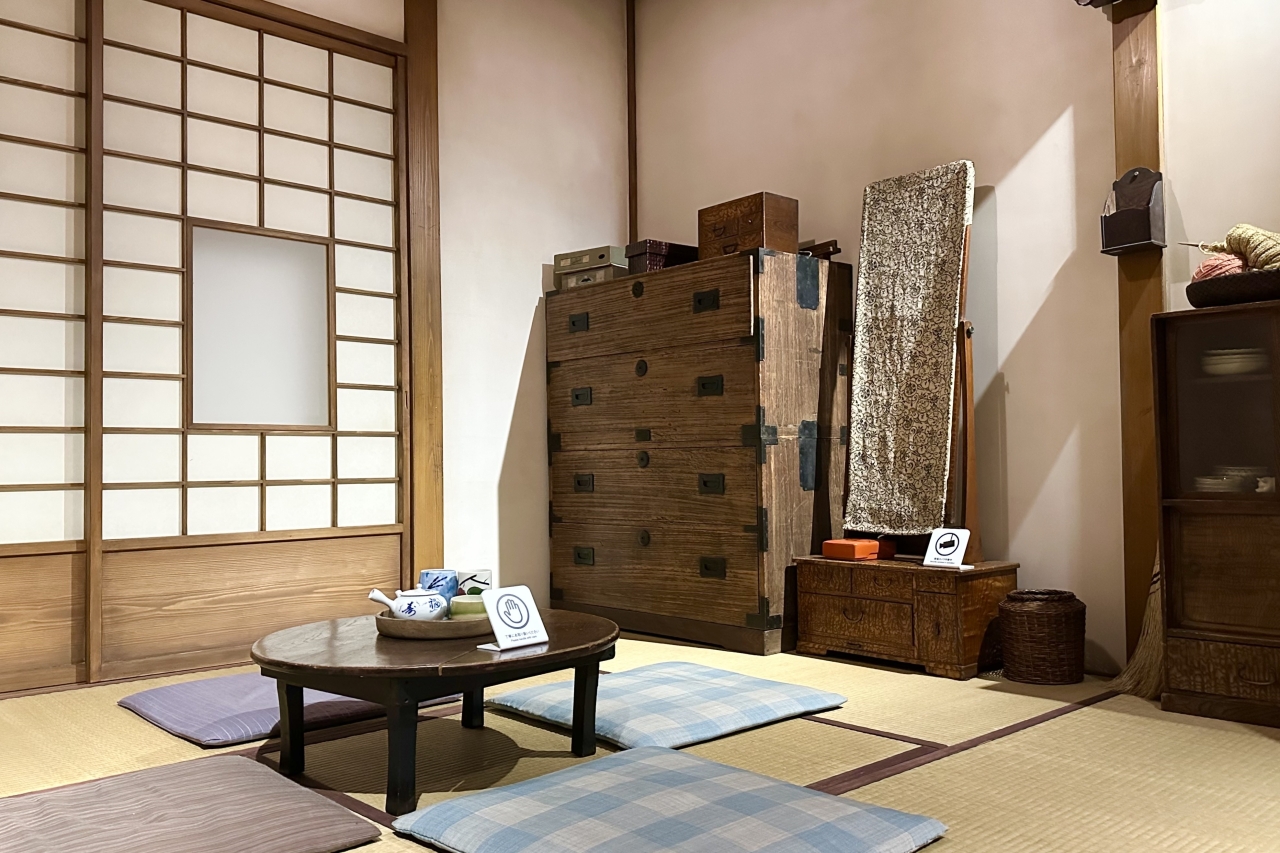
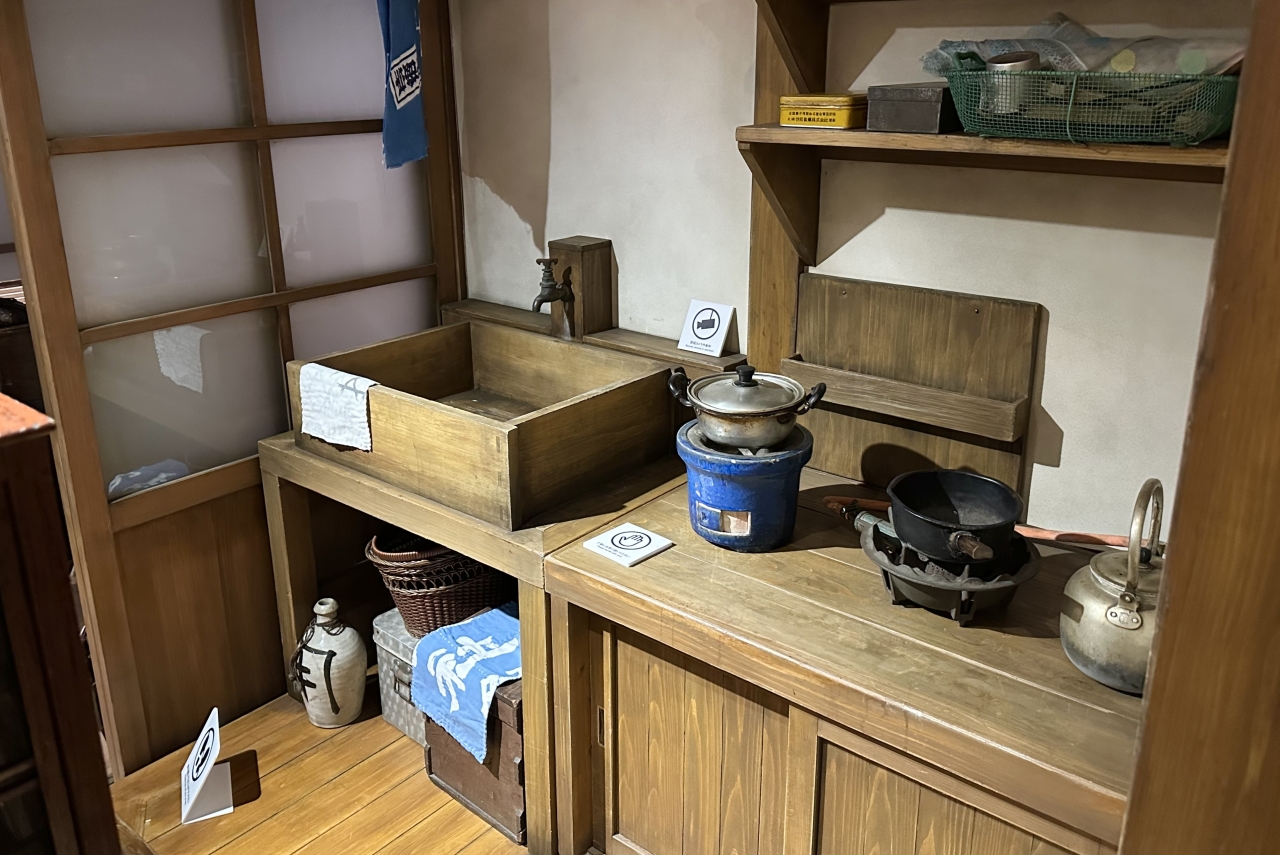
If you look closely at the exhibits, you’ll notice that, like the everyday scenes depicted in the animation, old and new things coexist together, such as “while there’s a gas stove in the kitchen, there’s also a charcoal grill in use.” Kondo says he was particularly particular about recreating the transitional period. When elementary school students visit on social studies field trips, he says he sometimes has them learn in a game-like way, asking them, “What did we use to cook before the gas stove was invented? Let’s find something that has the same function!”
The second floor area is a permanent exhibition room where you can learn about the history and culture of the downtown area, centered around Taito Ward, from the Meiji period through to the 1950s.
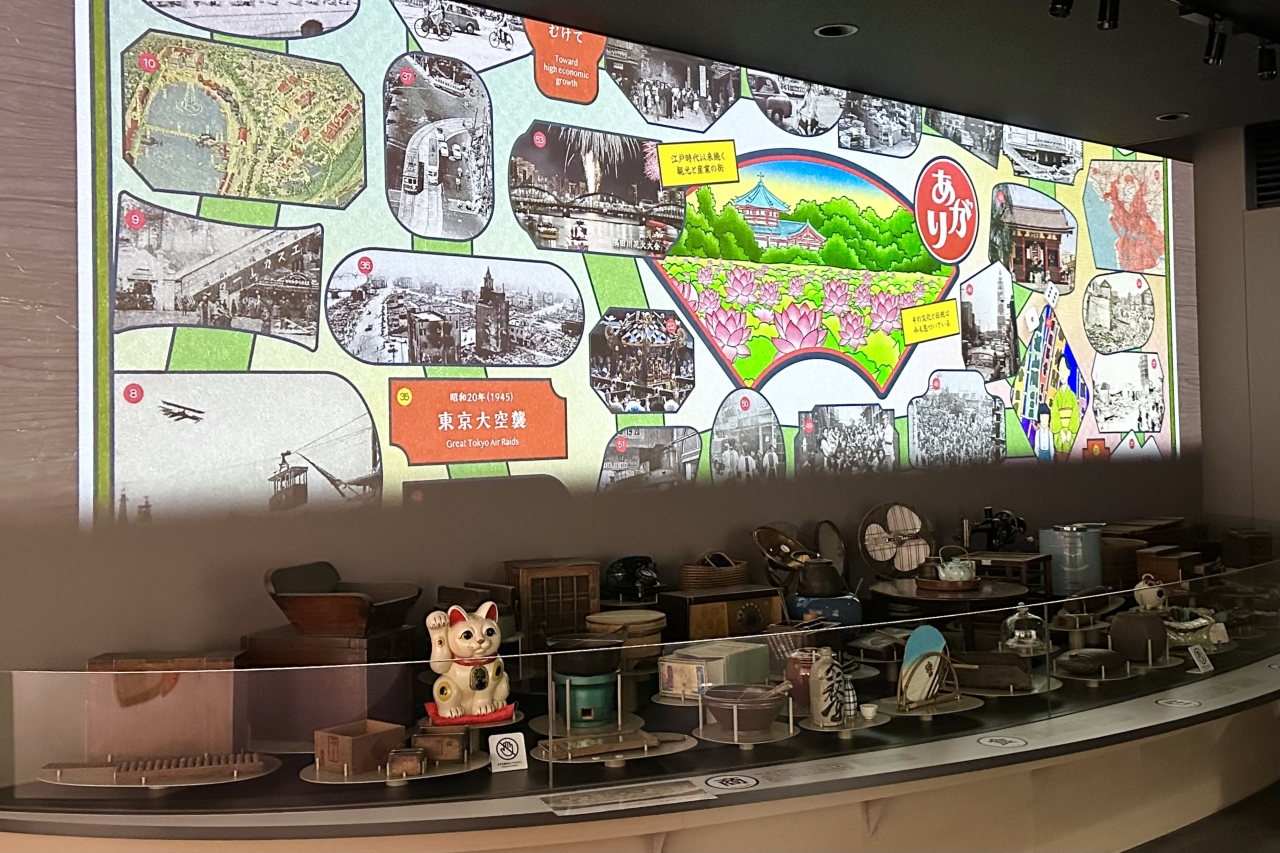
In the introductory exhibit just inside the building, two types of videos are shown on the screen: a video tracing the history of Taito Ward in the style of a sugoroku game, and a video introducing the everyday items that supported the lives of our ancestors. In addition, on the stage in front of the screen, actual items of the everyday items featured in the video are arranged by category: “clothing,” “food,” “housing,” “commerce (merchants),” and “occupations (craftsmen).”
“Initially, the idea for the introductory exhibit was to select and exhibit just one of the collection materials that symbolizes Shitamachi Museum. However, even as a curator, it is difficult to clearly define the concept of ‘shitamachi’, and it is impossible to express it with just one material. So, as one way of showing it, we placed a chabudai (a traditional dining table), which was the center of family gatherings, in the center, and displayed the items in an arrangement that spread out around it. We decided that the atmosphere that is created when the items are lined up is what we call ‘shitamachi.'” (Kondo)
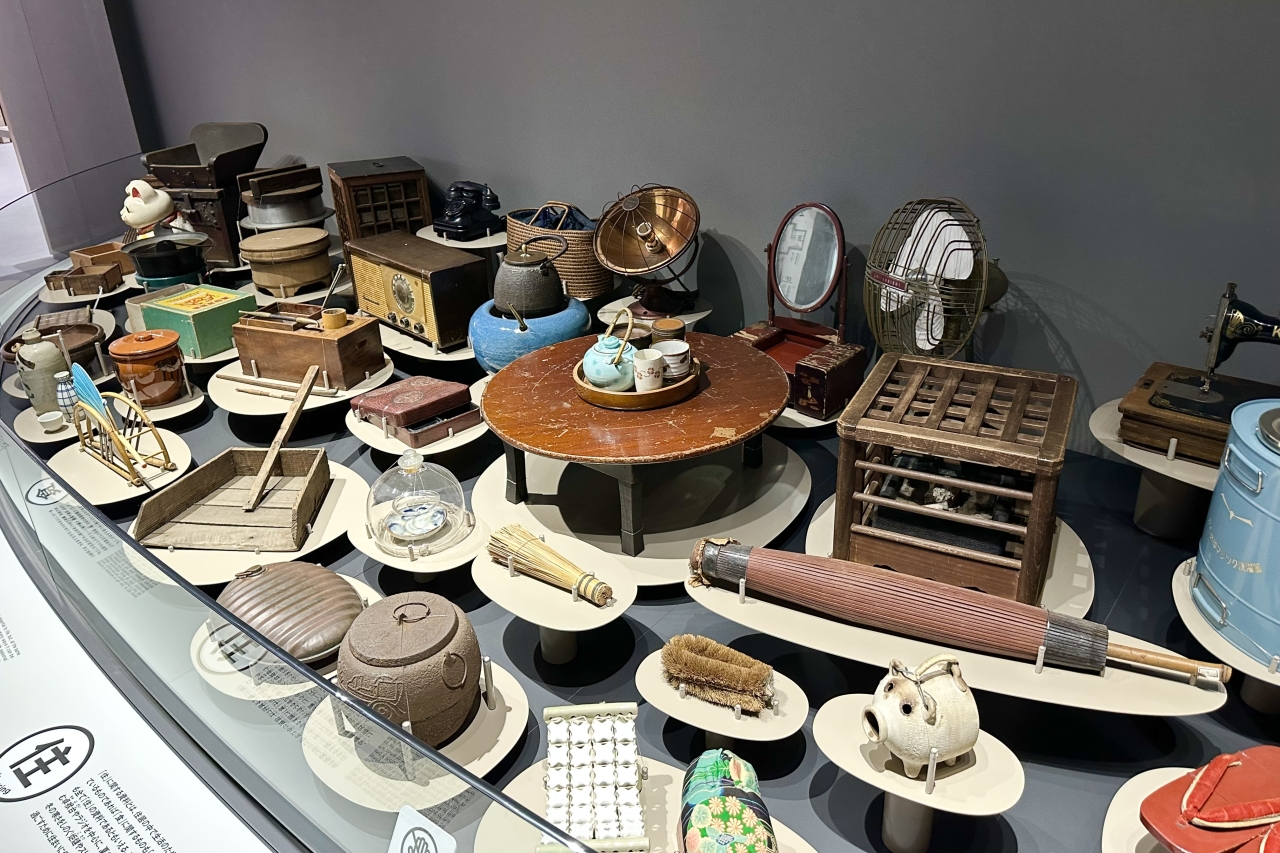
The exhibition features a wide range of items, from tools that children today may already know, such as dining tables and beckoning cats, to items that have completely disappeared in the Reiwa era, such as glass fly traps and money boxes used by merchants to deposit sales proceeds. It’s interesting to look at these unknown tools and imagine how they could be used.
Continuing on, the exhibits are divided into sections: “1. Culture and life in the downtown area since the Edo period,” “2. The Great Kanto Earthquake and reconstruction,” “3. Life during wartime,” “4. Starting over from the ruins,” “5. Towards rapid economic growth,” and “6. Life connected to our Taito ward.” They look back on how the townscape, lifestyles, and more have changed due to the major changes of each era.

The theme at the time of the interview was “cherry blossoms.”
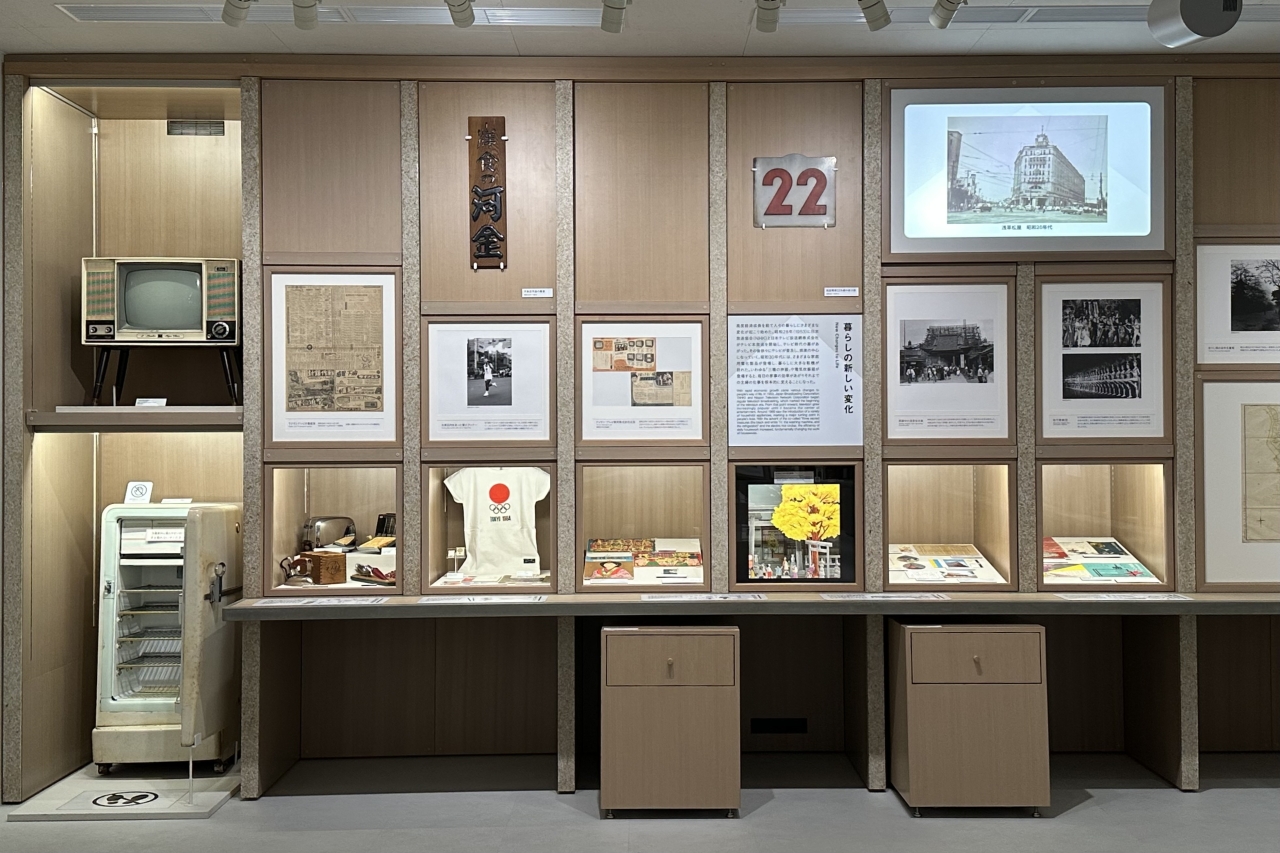
The way the materials are presented is also more striking than before.
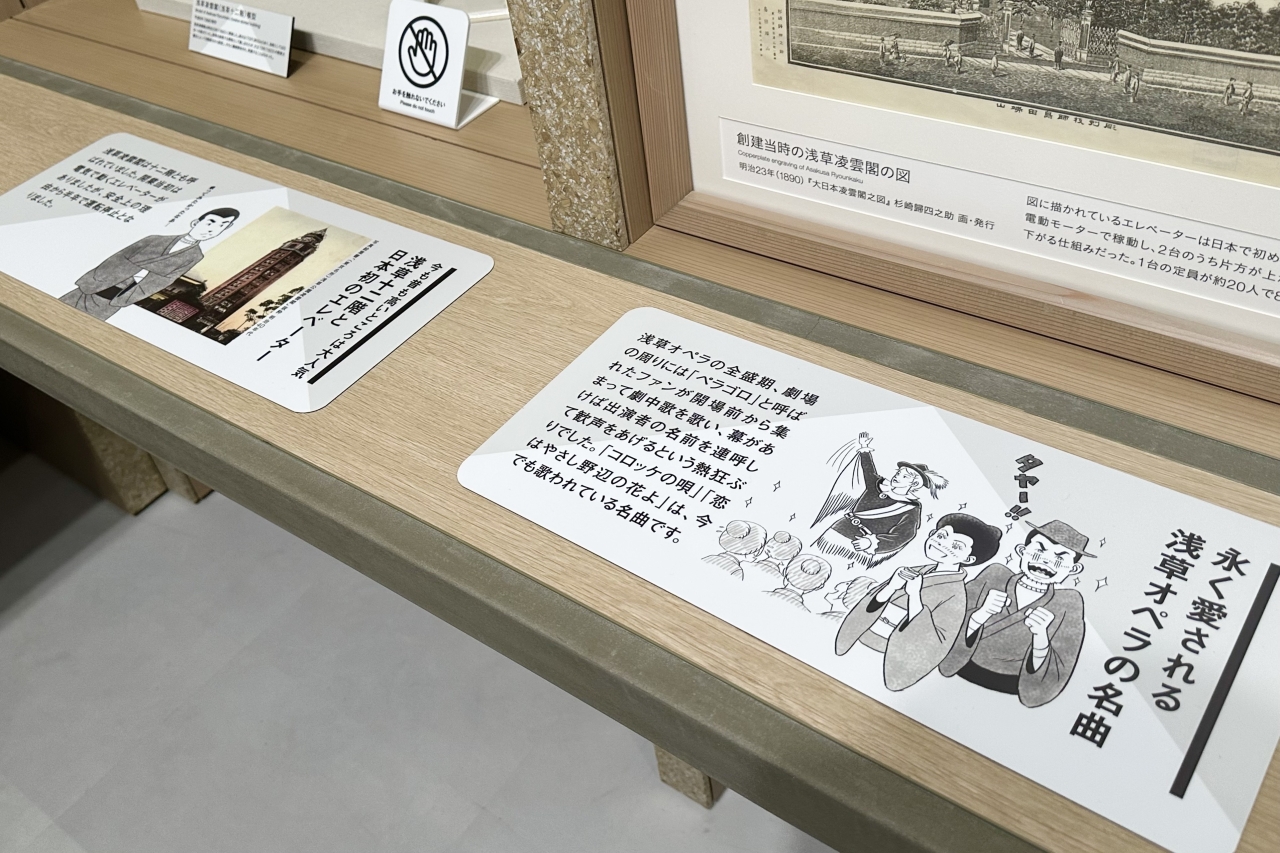
The “automatic telephone” (later a public telephone) that previously greeted visitors at the entrance to the facility also appeared in the area as a symbol of the transition of the downtown area. The first automatic telephones in Japan were installed in 1900, at Ueno and Shinbashi stations.
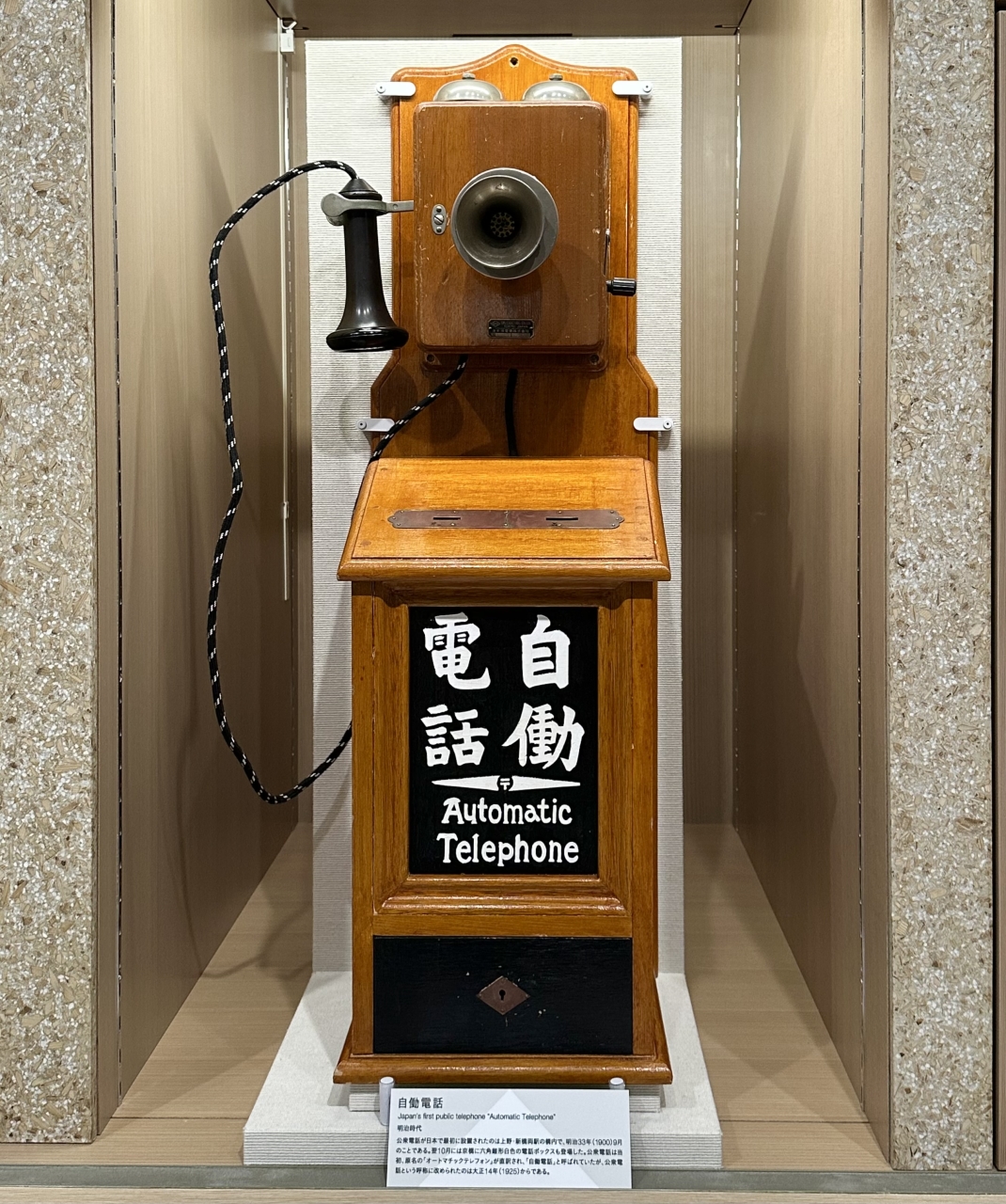
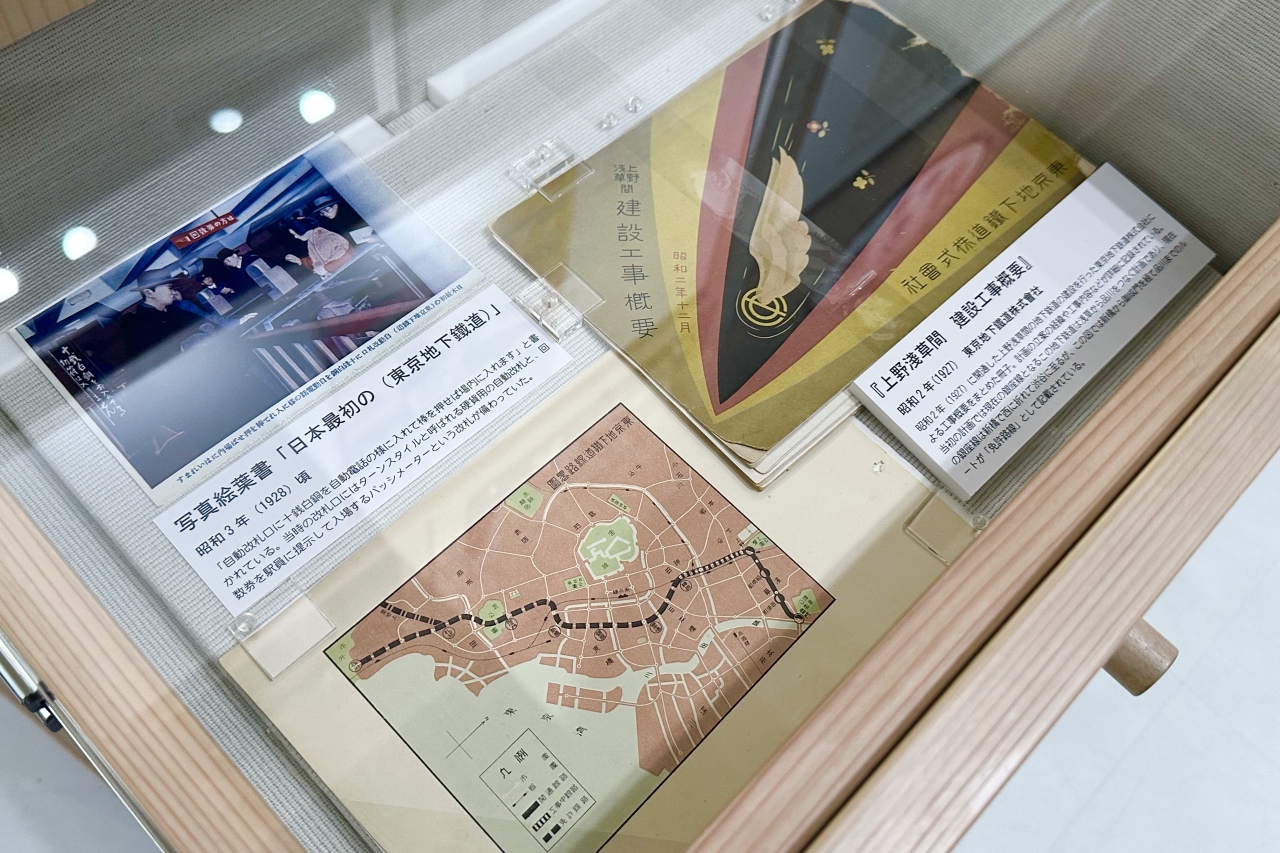
It’s easy to miss, but there are various documents hidden in the drawers, so be sure to check them out. For example, Taito Ward was the first area in Japan to have a subway (the current Ginza Line) in 1927, and the “Ueno-Asakusa Section Construction Overview” is a booklet that summarizes the construction of the subway at that time. The current Ginza Line runs from Asakusa to Ueno, turns west at Shinbashi, and goes to Shibuya, but the document states that the original route was planned to go from Shinbashi to Onarimon and then to Shinagawa, which was very interesting.
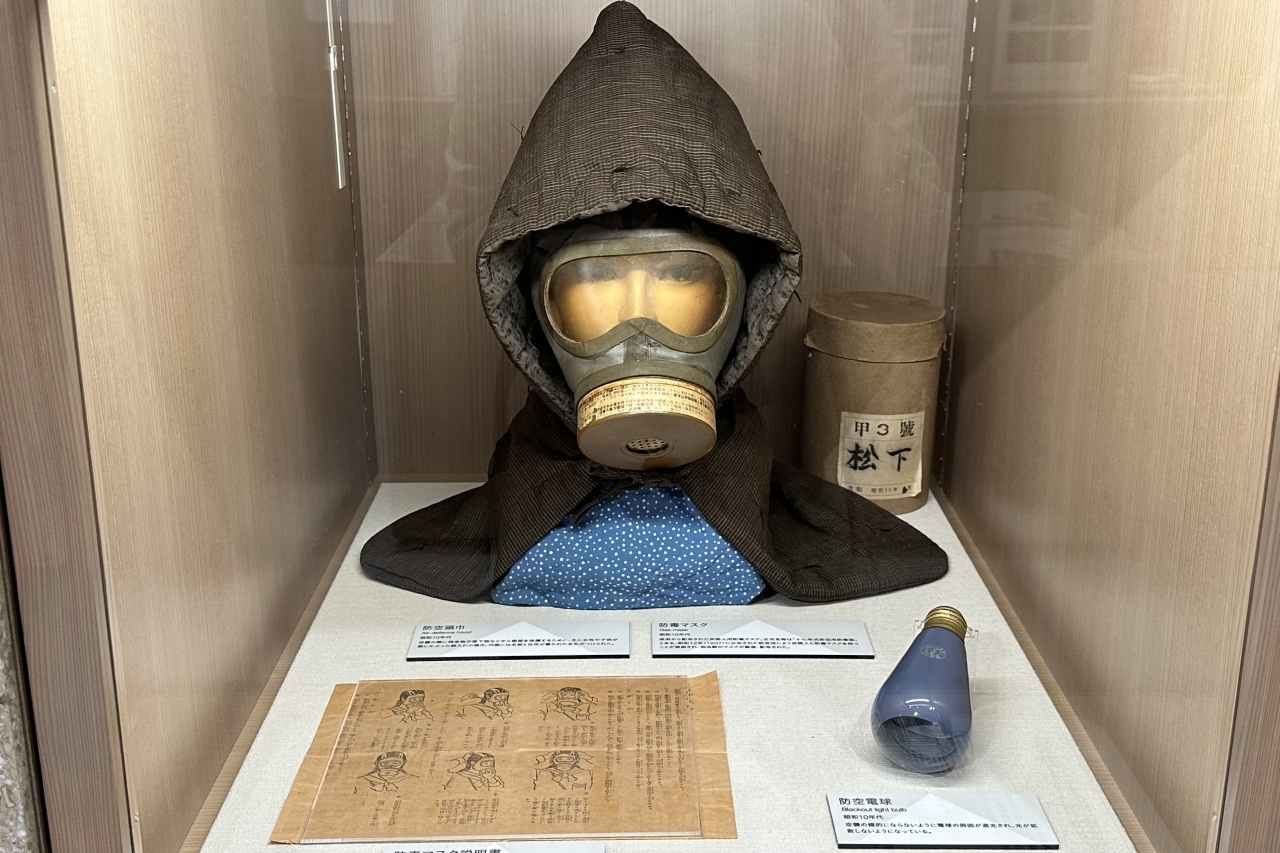
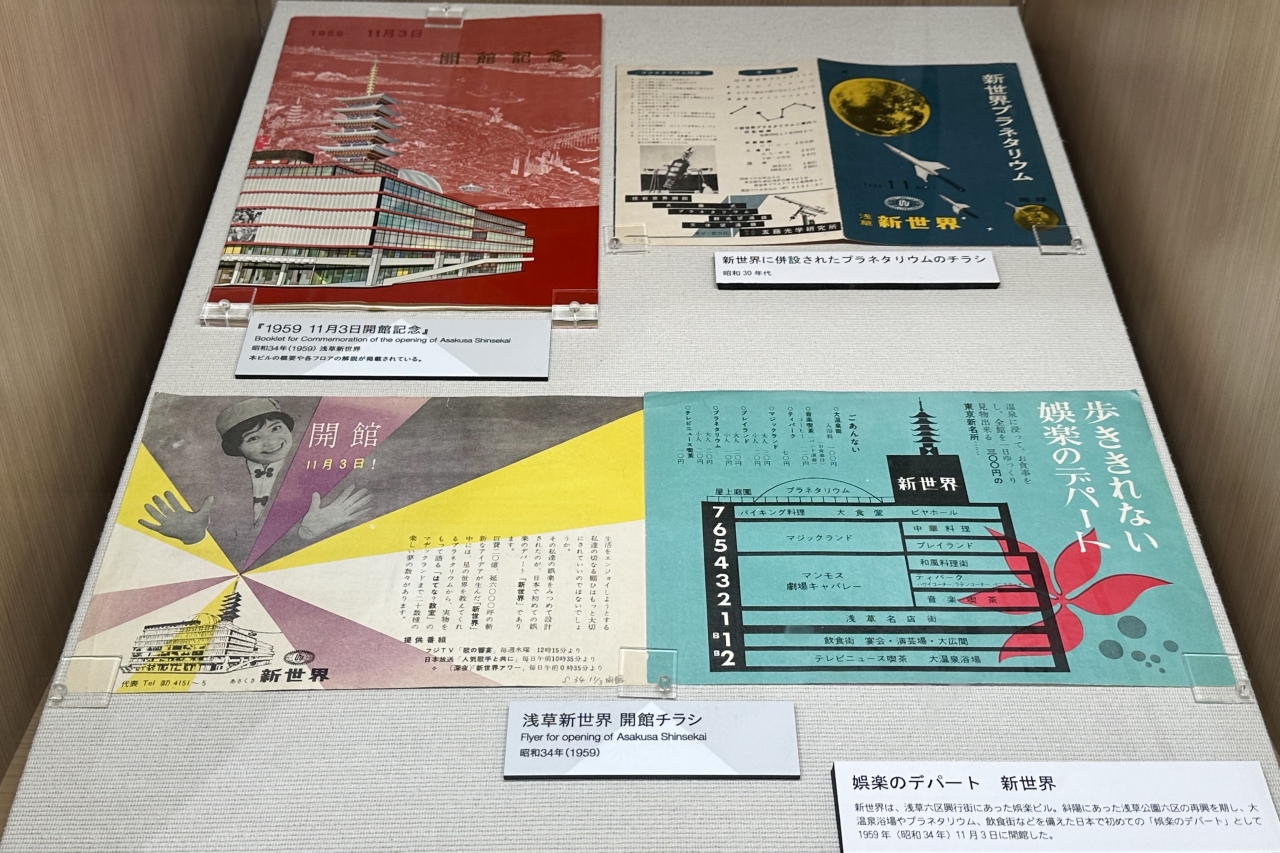
The newly opened third floor area houses a special exhibition room and a downtown information corner.
The special exhibition room changes exhibits three times a year, roughly every four months, and the first special exhibition has the theme of “What kind of town is a downtown?” It explores what a downtown is, from the establishment of Tokyo’s downtown (Taito Ward was not included in the downtown area when it was first established), to the history of its expansion, and the occupations and temperaments of the people who lived there.
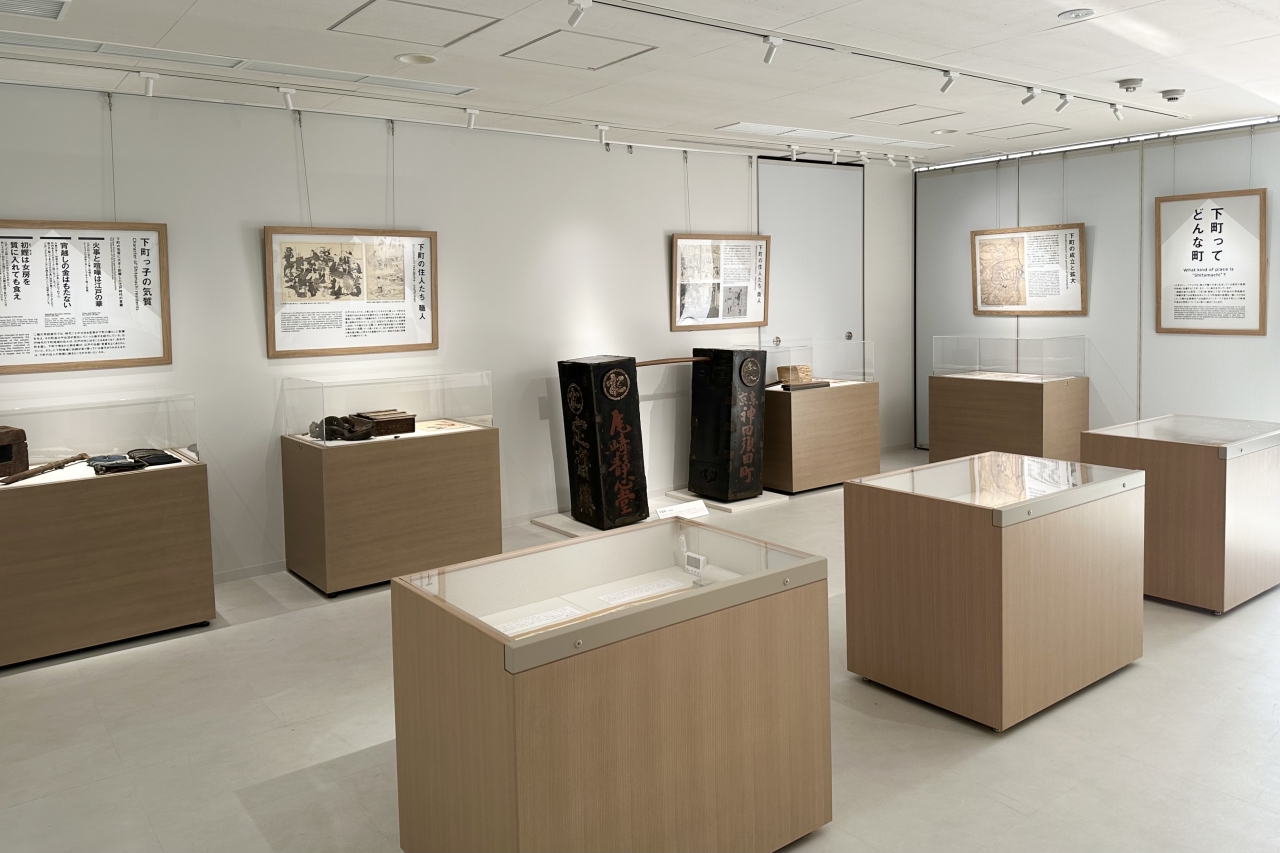
The adjacent Shitamachi Information Corner has a touch-screen terminal called “Shitamachi Material Search” that allows visitors to find out more about the materials stored in the museum.
If you are interested in or don’t understand anything in the reproduction exhibits on the first floor or the introductory exhibits on the second floor, you can rest assured that you will come here. You can also view data on materials that are not on display, which may be helpful for your studies or research.
(It depends on how busy it is, but if you have any questions about the materials, the curators will be happy to explain them to you.)
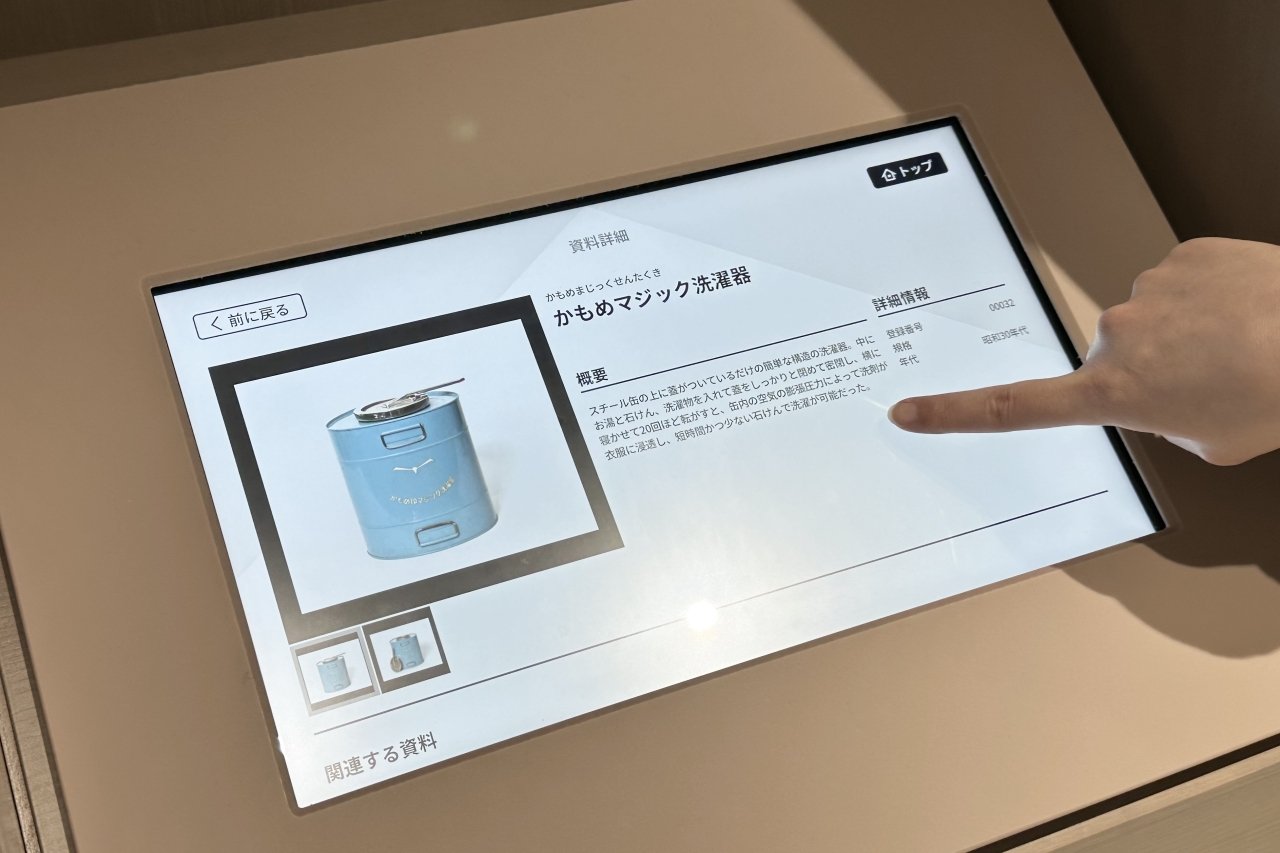
You can also try out old toys and everyday items such as kendama, menko, Matsukaze tops, abacus, and scales, and the benches can be used as a rest area. From the large windows, you can get a full view of Shinobazu Pond, making it a great spot to enjoy the seasonal changes of cherry blossoms, lotus flowers, and autumn leaves.
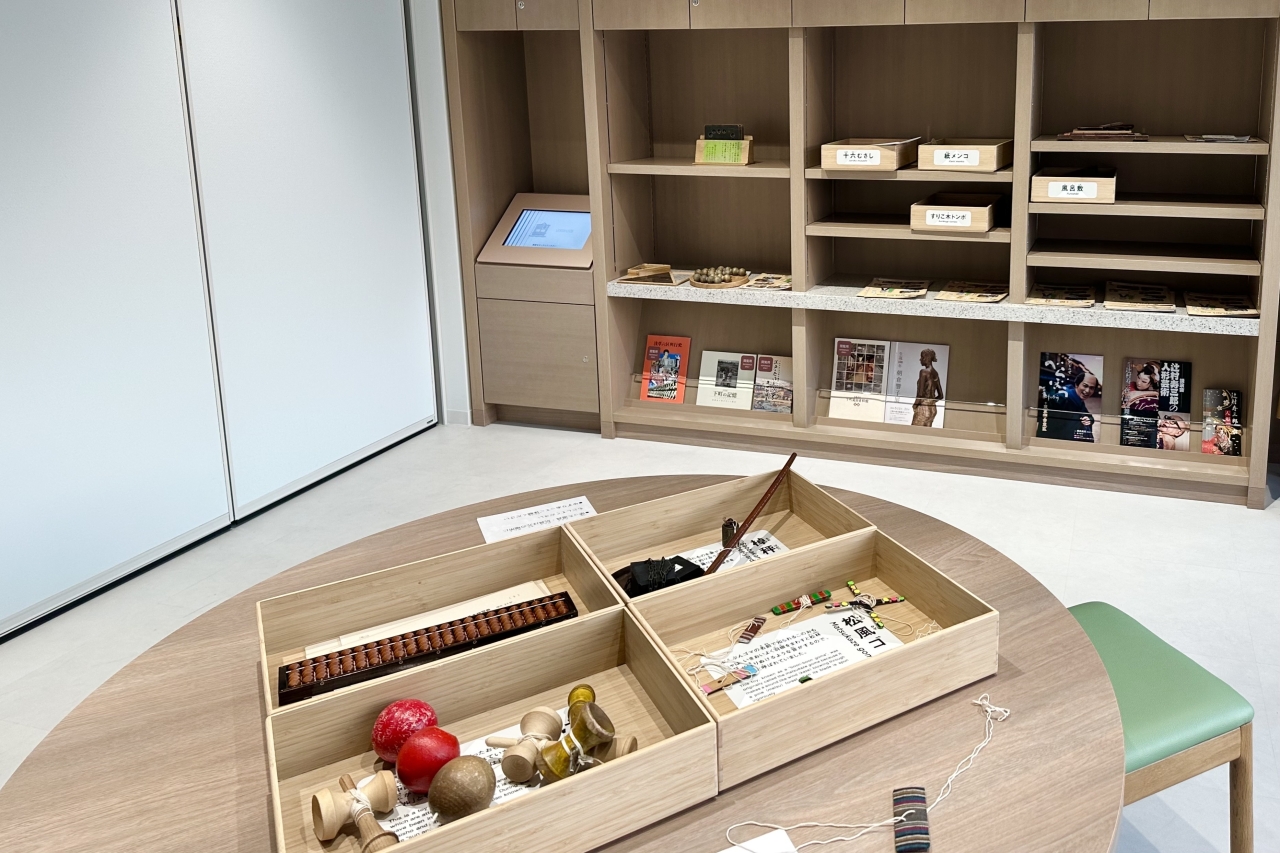
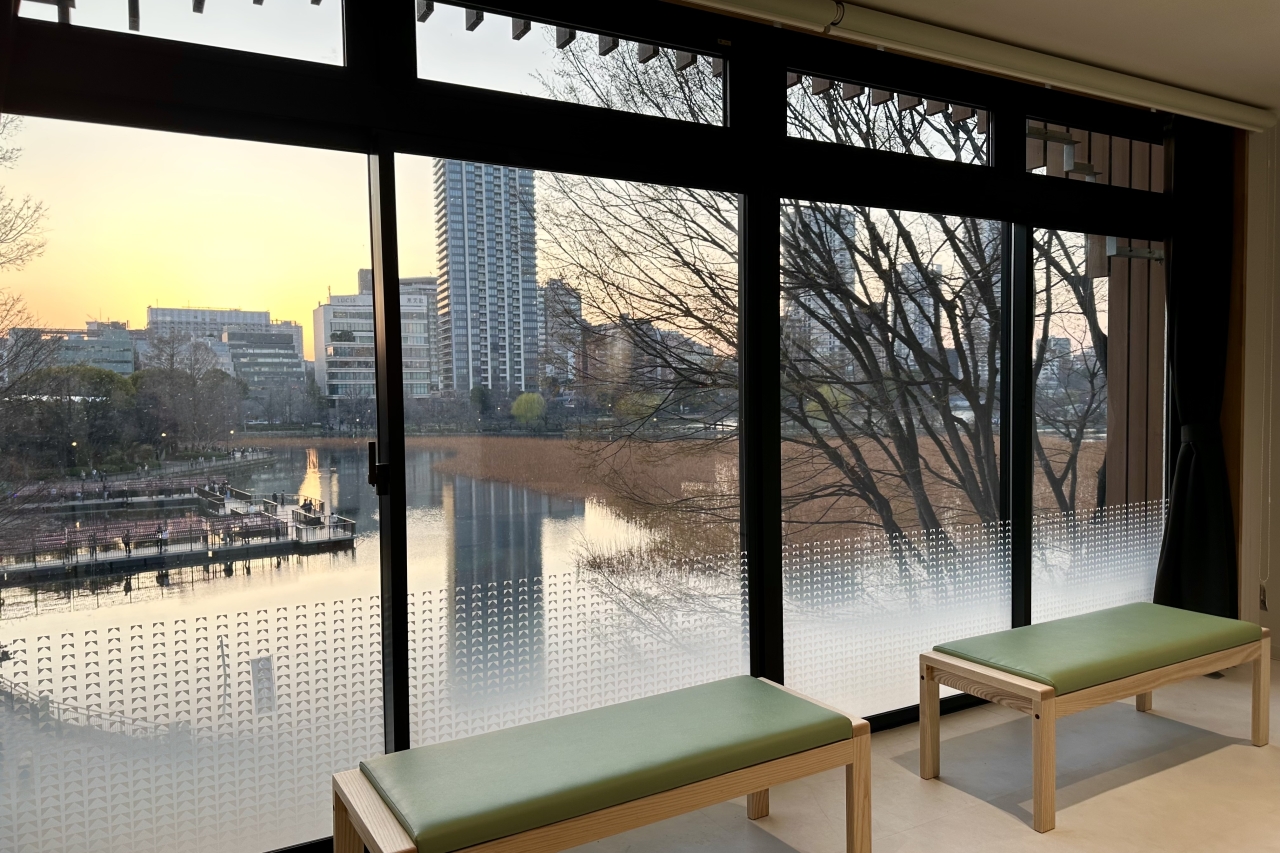
The Shitamachi Museum is a place where people of all ages, from children to the elderly, can make various discoveries and enjoy themselves. It has undergone a major transformation and has made a new start, but Kondo says that one thing it has inherited from the days of the Shitamachi Museum is the fact that visitors can hear real stories of their experiences from nowhere .
“The exhibits act as a catalyst for visitors to get excited as they recall their memories of the time, saying, ‘Oh, that happened!’ Or grandparents pass on knowledge gained from their own experiences to their grandchildren, and other visitors who hear this nod in agreement… We see scenes like this every day. You naturally hear valuable information that is not found in documents and can only be obtained from people who have actually experienced it. I think that is the greatest attraction of the main building,” says Kondo.
It’s a perfect location for a quick visit after a stroll around Shinobazu Pond, so why not stop by? Just like before the renovation, events such as street picture-story shows and traditional craft demonstrations will also be held, so please check the official website for details such as the schedule.
Overview of the Shitamachi Museum
| Opening hours | 9:30-16:30 (entry until 16:00) |
| Closed Days | Every Monday (or the following weekday if it falls on a public holiday), New Year’s holidays, special sorting periods, etc. |
| Admission fee | Adults: 300 yen (200 yen), elementary, junior high and high school students: 100 yen (50 yen) *Prices in parentheses are for groups of 20 or more. |
| location | 2-1 Ueno Park, Taito-ku, Tokyo 110-0007 |
| access | 3 minutes walk from Ueno Station on the Keisei Main Line 5 minutes walk from Ueno Station on the JR, Tokyo Metro Ginza and Hibiya lines |
| phone | 03-5846-8426 |
| Official website | https://www.taitogeibun.net/shitamachi/ |
*The contents of this article are current as of the time of coverage. Please check the official website for the latest information.

